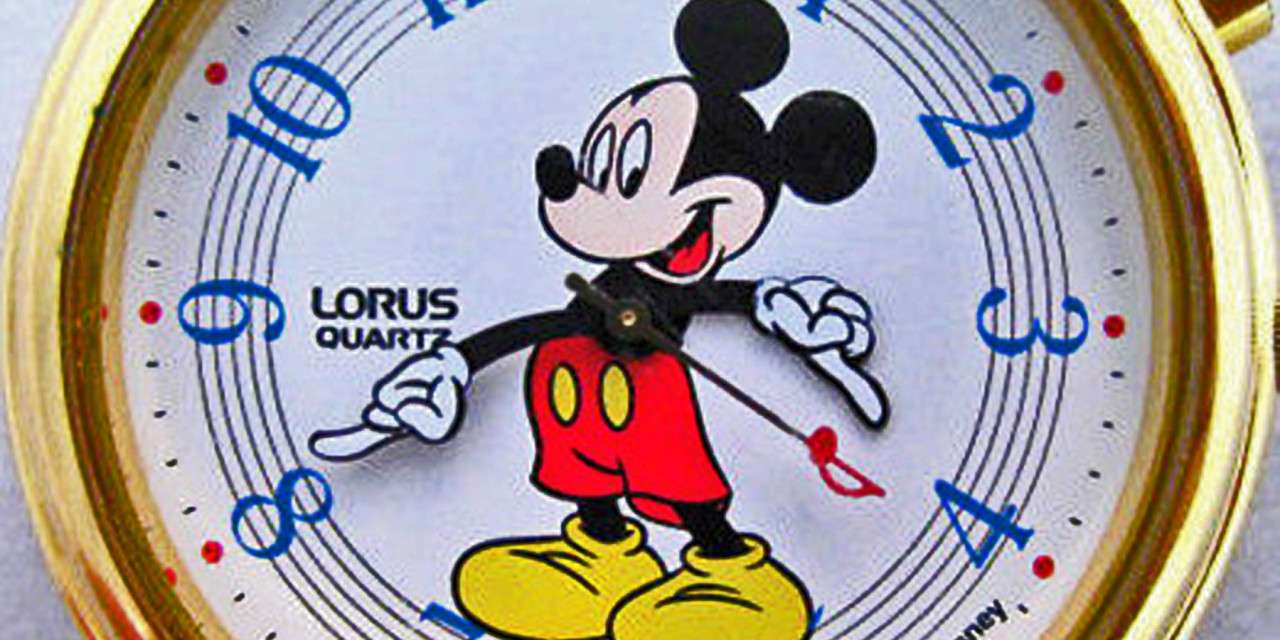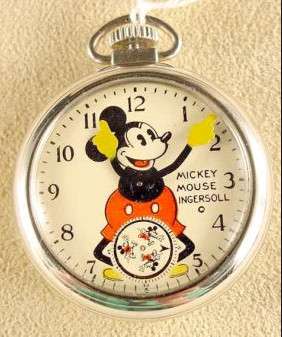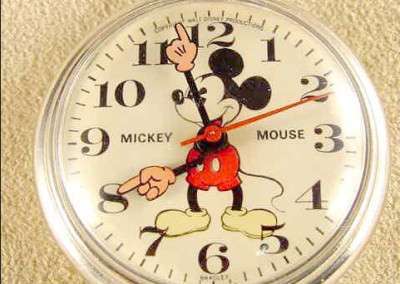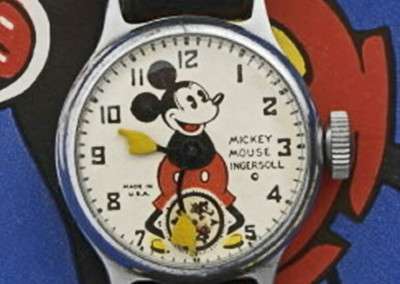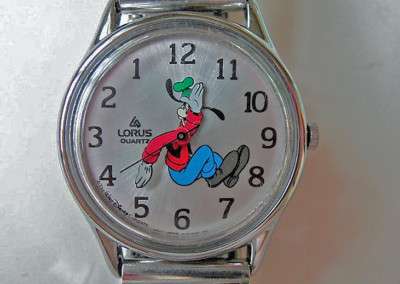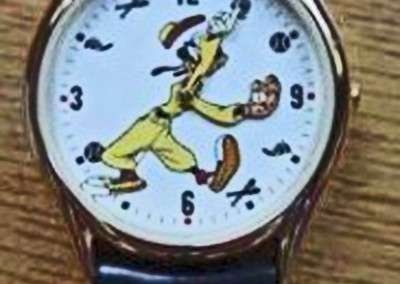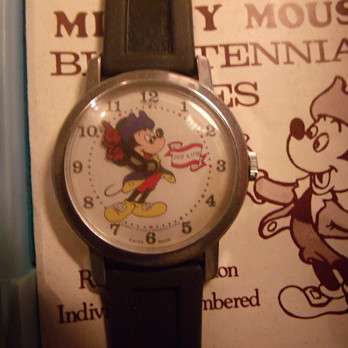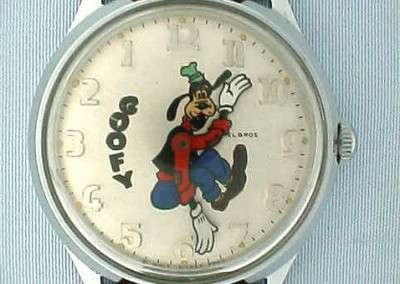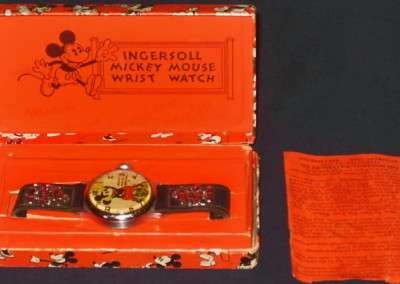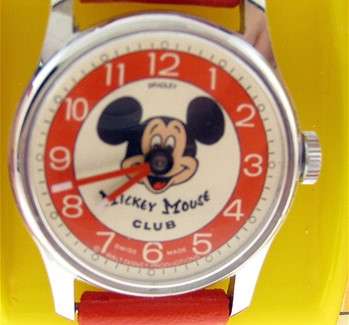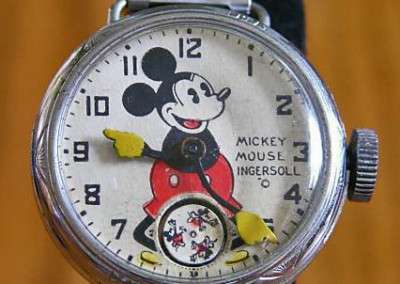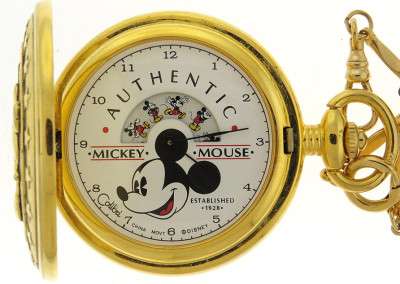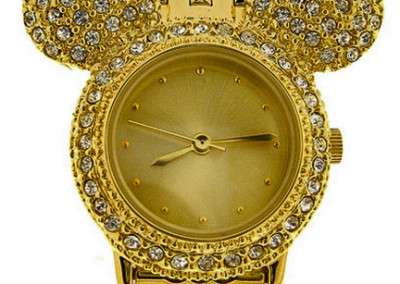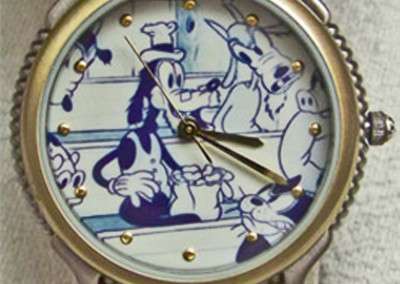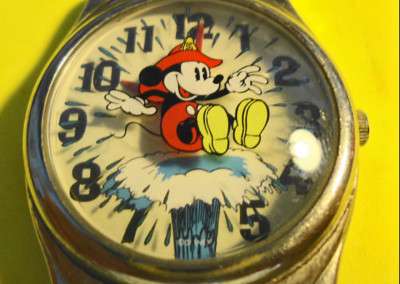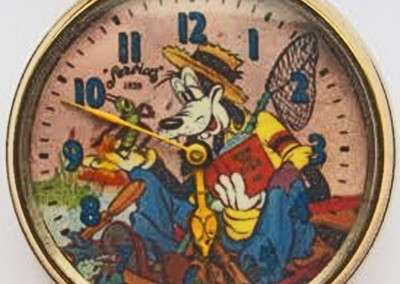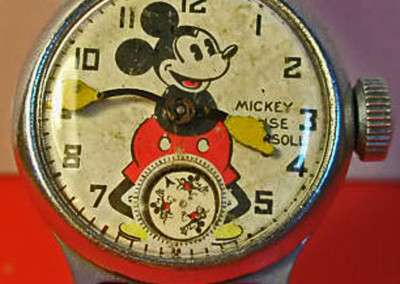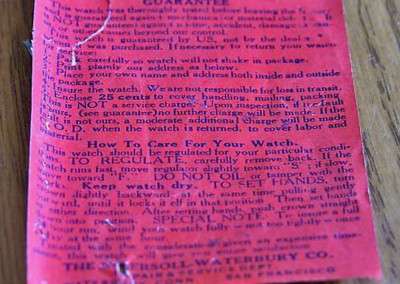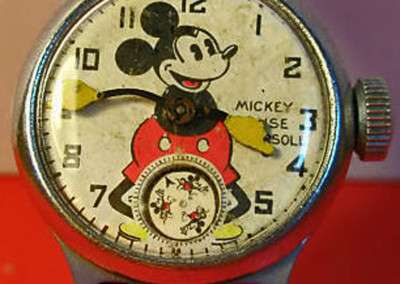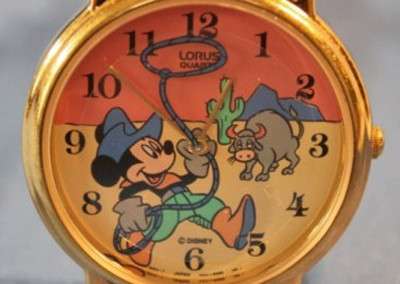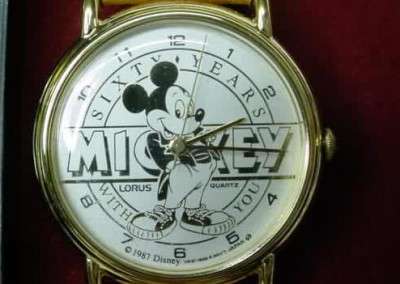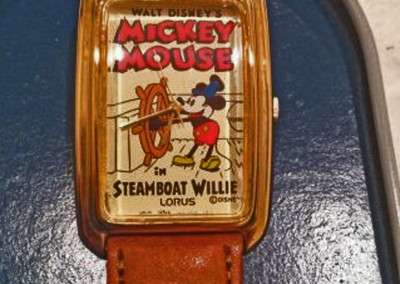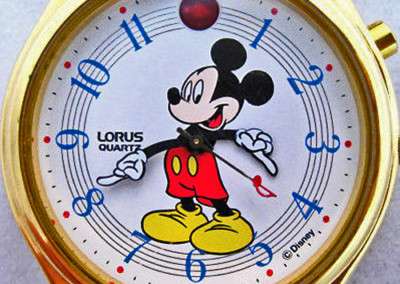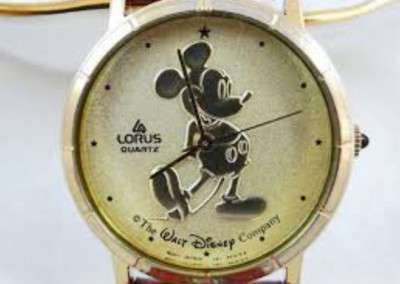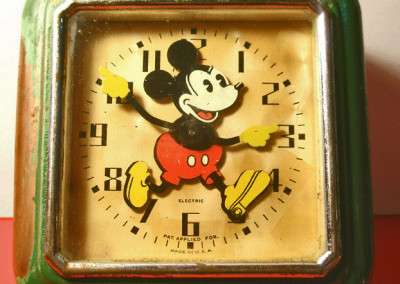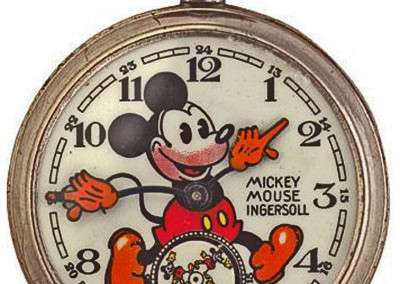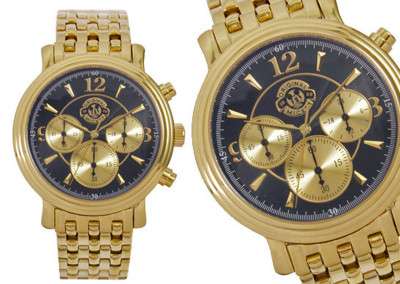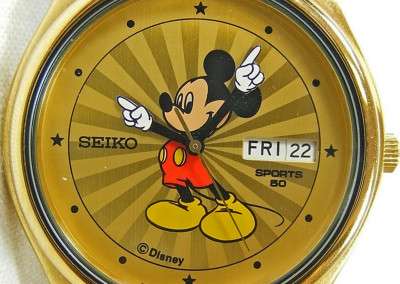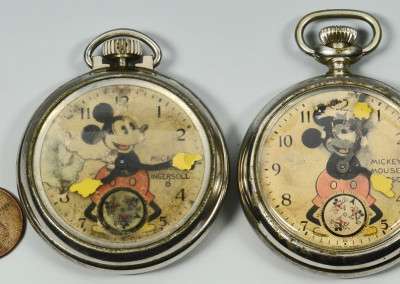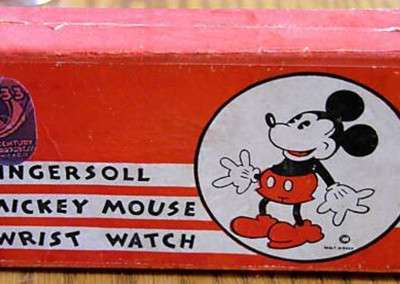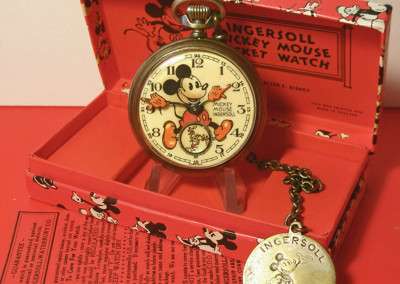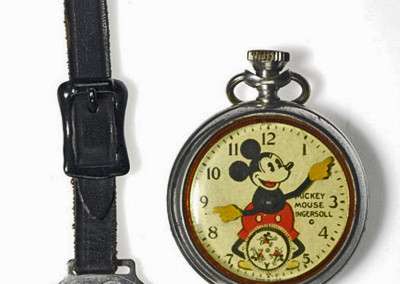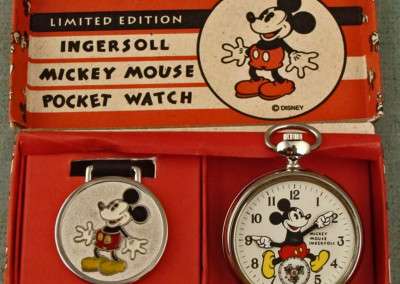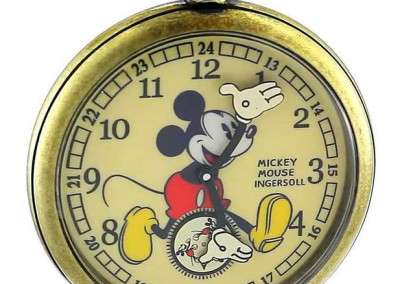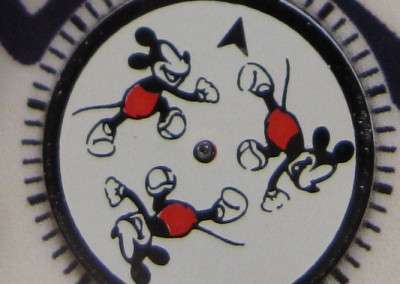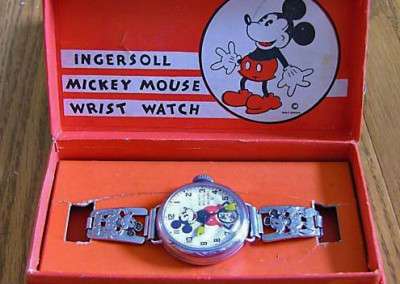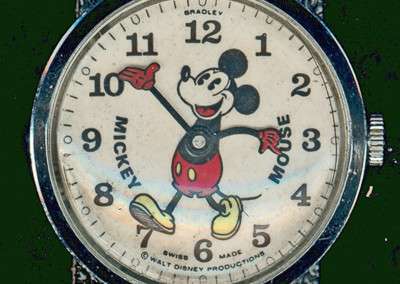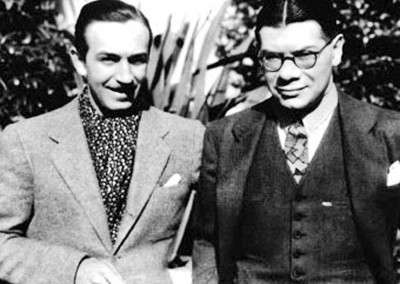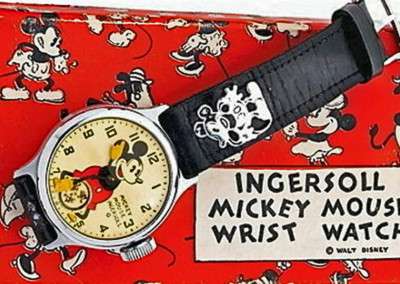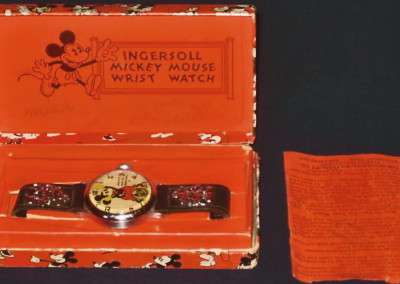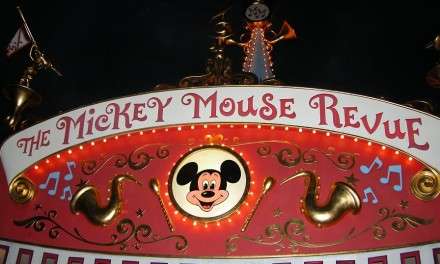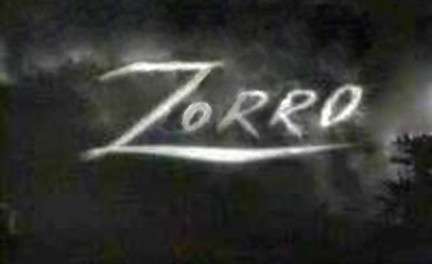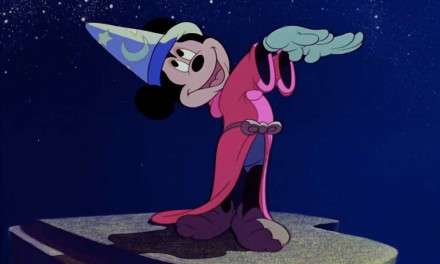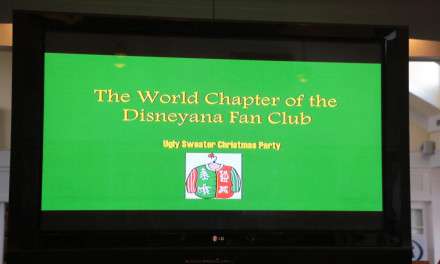Perhaps no company or business today has more merchandising linked to its products than the Disney Company. From the earliest days in the studio’s history the marketing of Disney merchandise brought in much needed revenue for the company. But in the beginning, Walt never realized the huge revenue potential possibilities of licensing his product. The first Disney created character to be used in this way was Oswald the Lucky Rabbit, but this was mainly for publicity. It was in late 1929 while he was in New York negotiating with Pat Powers, when a man approached him in the lobby of the hotel he was staying, and offered him $300.00 for permission to use the likeness of Mickey on school writing tablets. Walt said…”As usual, Roy and I needed money, so I took the Three Hundred”. Thus making this his first license for a Mickey Mouse product.
I do not believe that Walt, despite his uncanny ability to know what would work, and the ability to “see the future” so to speak could fathom the scope of his products today. Disney’s merchandising division brings in untold millions of revenue and the product line grows day by day. But in the beginning, that was not so. As Walt saw the potential of this revenue-producing endeavor, he knew that he needed an expert, and by magic, a Mr. Herman Samuel Kominetzky, or Herman “Kay” Kamen entered the picture. Kay started as a salesman for a Mink hat co. in Nebraska. Kay was a wonderful salesman and with his sense of humor and caring personality, made a name for himself. By the time he signed on with Walt and Roy, he had an extensive background in marketing and merchandising. It was in 1932 that Kay decided he would call the Disney Brothers with a proposition. He called Walt and Walt agreed to meet and talk the next time he came to California. When Kay arrived in Walt’s office, he began talking about control of the merchandise, the quality and image, etc. Walt liked what he heard and called Roy into the office. On July 1st, 1932 Kay and the Disney Brothers signed a contract. It was one of the best business liaisons for the Disney Studio. Thanks to Kay’s strategy and marketing savvy, he brought millions into Disney’s coffers.
One of the most successful and popular items that Kay introduced to the public was the Mickey Mouse Watch. Kay submitted the idea to the Ingersoll-Waterbury watch Company. At the time, Ingersoll was on the brink of bankruptcy, and it was the Mickey Mouse watch that brought it back!(Much like the Lionel Train Company) The Mickey Mouse Watch for boys was launched at the 1933 Chicago Exposition ‘Century of Progress’. The watch was a huge success…The public seeing in the watch, Mickey’s humor and a bit of a respite during the dark days of the depression. This first series of watches were comprised of a wrist and pocket watch. Both had a picture of Mickey on the dial with his hands animated, telling the minutes and hours, and a novel small dial at the bottom with three little Mickeys chasing each other as the seconds ticked by. The Mickey Mouse watch was priced at $3.25 and then later lowered to $2.95. The pocket watch was also made available around the same time for the price of $1.50. It is interesting to note, since over the years, Ingersoll manufactured millions of the watches, and because of the vast quantity produced; and there are still thousands still working, they are not as valued as much as you would think. However, the Holy Grail, or most valued and collectable timepiece is the Pocket watch with the attached fob.
In 1934, Ingersoll of London began marketing the watches in Great Britain, abet with a different design from the ones in the States. These watches were marked “Foreign” and since the British market audience was smaller than the United States, they were produced in much limited numbers, thus making these timepieces extremely collectible. These British watches were sometimes called the “Balloon Trousers Mickey” watch because of the extremely inflated pair of red shorts on the bezel. However in the 1936 edition of the British Mickey Mouse watch, the shorts were of more normal size and the hands and feet were larger to compensate. The original watches sold for roughly 15 shillings, or about $4.50, a considerable amount at that time. Ingersoll continued to produce Mickey Mouse Watches throughout the ’40s and ’50s. In the 1960’s Ingersoll became US Time which then became Timex. The Mickey Mouse watch has been made continuously since that very first watch back in 1933. During the 1960’s the company removed Mickey from the face on the watch, only the words, “Mickey Mouse” was written on the dial.
In addition to Mickey on the watches, Minnie also appeared on the watch face, and when this addition proved successful, she got her own watch, just for the girls. In the 1960’s, there was a decrease in popularity in the watches, so a new fad in watches came about, the “Mod” watch. With an over-sized wristband and large bezel, Mickey adorned the watch once again. Also during this period, Ingersoll Rand (Timex) also produced the first battery operated and water resistant Mickey watches. In 1971, Ingersoll-Timex ended making Mickey Mouse Watches.
After the Ingersoll period, many other watch manufactures took over the reins and produced a plethora of watches, in every shape and design. One of the most unique and very collectable “Mickey” watches was produced by the Helbros watch company in 1972. Dubbed the “Backwards Goofy” watch, with numbers placed “Backwards” on the dial and Goofy’s hands rotated counter-clockwise as well. A little confusing at first, but the timepiece proved to be a hit. Originally priced at $19.95, they were selling twenty years later for $700.00 by serious collectors! They also produced an electric Mickey watch. In the early 1970’s, the Elgin National Industries took over manufacture of the Disney Watches. Their Bradley Watchmakers division took over in late 1972, marketing a premier watch with Mickey’s rotating hands in bright red gloves and a serious Swiss movement. Bradley continued until 1987 when Lorus took over. Today, many other manufactures produce Mickey Mouse watches in an endless array of styles, graphics, bands etc. Fossil, Seiko, Colibri and the Disney Time Works company brand all now produce beautiful retro and new Mickey Mouse watches. Many other Disney characters adorn the watch line now. There are Mickey alarm clocks, wall clocks and everything in-between.
As long as Disney fans exist, there will always be a market for Disney memorabilia and souvenirs. After that first exposure to marketing his own creation back in that hotel lobby, Walt got a first-hand education on how lucrative it was licensing his product. Even though Walt passed in 1966, I don’t believe he could have foreseen the scope of his merchandising division today.

